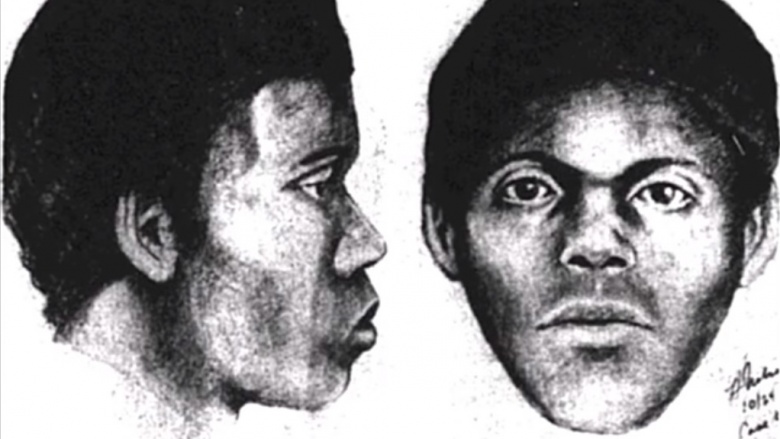Terrifying Crimes That Nobody Has Ever Solved
Most crimes aren't committed by evil masterminds, so it's easy for us to maintain the delusion that justice is always, and easily, served—otherwise, how would we ever sleep again? Unfortunately, while many crimes are indeed solved, and those responsible thrown in jail, human fallibility and just plain bad luck often means that many criminals—murderers among them—never see the world from behind bars. Here are a few crimes that never got solved, and that might just keep you awake at night.
Elisa Lam
Elisa Lam, a student at the University of British Columbia, was staying in Los Angeles at the downtown Cecil Hotel when she went missing, and later turned up dead. Elisa suffered from bipolar disorder and depression, which has helped to cast doubt on suggestions of foul play, but that doesn't explain the events that lead to her death. On January 31st, 2013, the day she was due to check out and continue her solo vacation, she was seen, and spoken to, by hotel staff and nearby shopkeepers, but failed to make her daily call to her parents, who became worried and raised the alarm. Despite thorough searches of the hotel, including the use of sniffer dogs, no sign of her turned up, and despite media appeals, nothing was heard from her for two weeks.
On February 14th, police released a surveillance video from one of the hotel's elevators. Mysteriously recorded on February 1st, the day after she was due to leave LA, the video lasts several minutes and shows Lam behaving incredibly strangely, stepping in and out of the elevator, hiding in the corner, and at one point seemingly talking to someone outside and out of site of the camera. A few days later, after guests began complaining about low water pressure and bad-tasting water, hotel employees discovered Elisa Lam floating naked and dead, surrounded by her clothes and belongings, in one of the rooftop water tanks. The cause of death was eventually put down as accidental drowning, but several parts of the mystery don't add up: her behavior in the elevator, how she got on the roof without tripping alarms or unlocking doors, how she managed to both open and then close the heavy lid of the water tank, and why the dogs found no trace of her, despite going on the roof during their search. Despite the official report, the unanswered questions surrounding this tragic and mysterious death will continue to haunt the public imagination for years to come.
Long Island Serial Killer
The Long Island Serial Killer is believed to have been active between 1996 and 2013 and, so far, anywhere from 10 to 17 murders have been attributed to him. The bodies were found dumped close together along Gilgo Beach in Long Island, and they had all been strangled and wrapped in burlap before being dumped.
It was during the 2010 search for a missing person, Shannan Gilbert, when police stumbled upon the first body, and it wasn't long before more bodies started to be discovered in the surrounding area. Gilbert's body was later discovered near to where the first body was found, yet despite similarities between the cases, no firm connection has yet been found. Many of the bodies were identified as prostitutes who advertised on Craigslist, however there were several—including a child and a young male—who have never been identified. The case is still open, and since December 2015, the FBI have been officially involved, but despite the extra resources, they appear no closer to solving the mystery, and a brutal killer remains on the loose.
Evelyn Hernandez
24-year-old Evelyn Hernandez was a heavily pregnant single mother living in San Francisco, when she disappeared with her five-year-old son on May 1st, 2002. Apart from her wallet, that was found abandoned in south San Francisco, no trace of her had been found for over two months, when what remained of her body was spotted floating near the San Francisco bay bridge by a passer by on July 24th. DNA tests had to be used to identify her, since her remains were described as "part of a human torso" in the media reports. Her five-year-old son and unborn child—which was just days away from its due date at the time of her disappearance—were never found, and are presumed dead.
In a bizarre and eerily similar twist, five months to the day after Evelyn Hernandez' body was discovered, another pregnant woman, Laci Peterson, went missing. Four months later, the remains of her unborn child were found by dog walkers, followed the next day by Laci herself, who washed ashore a mile away from where her child was found. She was missing her head, both hands, and parts of both legs, which inevitably drew comparisons to the still-unsolved murder of Evelyn Hernandez, but when Laci Peterson's husband was convicted for her murder, any connection between the two cases was officially dismissed.
Hinterkaifeck murders
On March 31st, 1922, six members of the same family were brutally murdered on their farm in rural Germany—however, the story actually started a few days before that. While out on the farm, the farmer had discovered footprints in the snow leading from the nearby woodland to the farm, but none going the other way. Over the next few days, the family reported hearing strange noises and footsteps coming from the attic, seeing things out of place, losing their house keys, and even finding a newspaper that no one could remember buying.
On the day of the murder, investigators believed the farmer, his wife, and two of their daughters were somehow lured out to one of the barns, where they were murdered one-by-one with a pickaxe and beheaded. The killer then made his way into the house, where he killed the youngest child while in his cot, along with a maid who had just started working there that day. Autopsies confirmed the date of death as the 31st, though neighbors reported seeing smoke coming from the chimney after that date—in addition, when investigators arrived, it was clear that the farm animals had recently been fed, suggesting that after the killing, the murderer actually stayed at the farm for several days.
Since this crime was committed almost a hundred years ago, it is safe to say that the killer is probably long dead ... but that doesn't make it any less terrifying.
The Doodler
Between 1974 and 1975, a string of murders were committed in San Francisco that appeared to target the city's gay community. Fourteen murders were eventually attributed to the killer, who was given the media nickname "The Doodler," due to his method of attracting his victims, which involved going to bars and clubs, and creating drawings of people to break the ice. He would then lure his victim to a remote location, like a park or a beach, where he attacked them, stabbing them repeatedly in the front and back, then hiding the body. Three victims survived their attacks, and since they had spent some time with their attacker before they were assaulted, they were able to provide the police with descriptions of a suspect—the police were even able to make an arrest.
However, despite having a man in custody, the police were unable to proceed with a conviction because the witnesses refused to testify in court, as they were afraid to come "out" in public. So the suspected killer of fourteen men, and attempted killer of three more, was released, his identity never revealed, and the crimes remain "unsolved" to this day.




